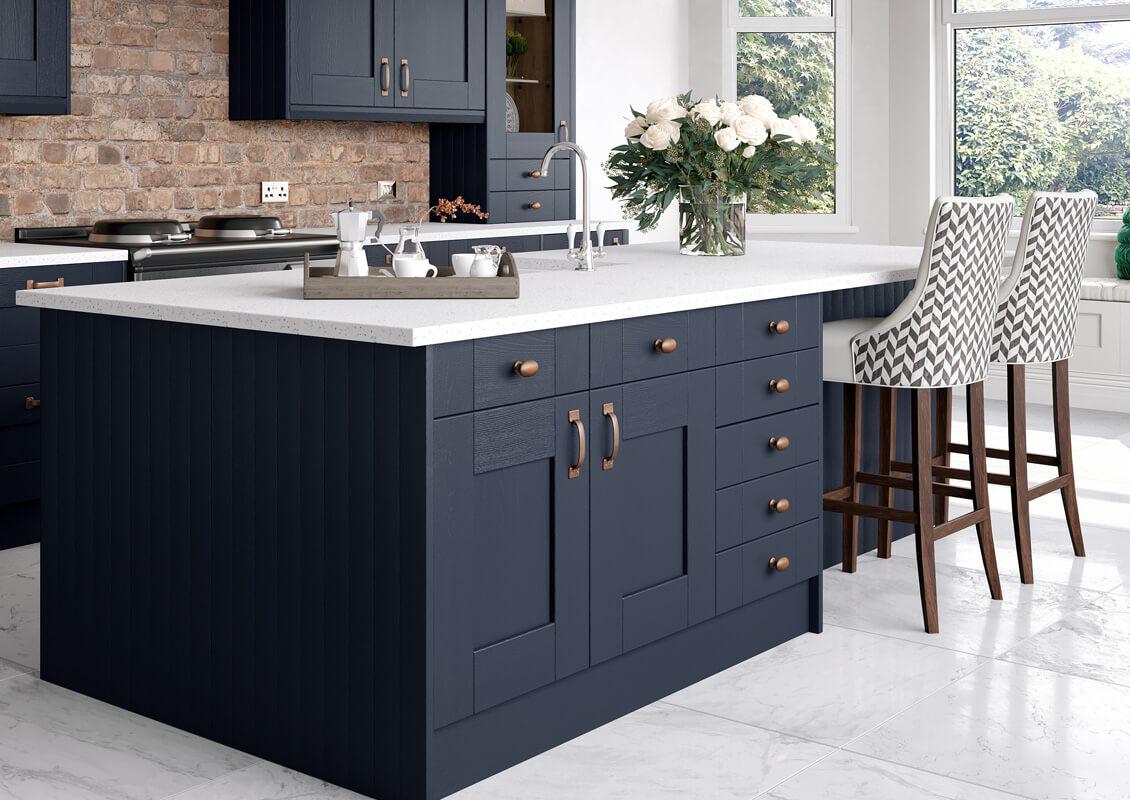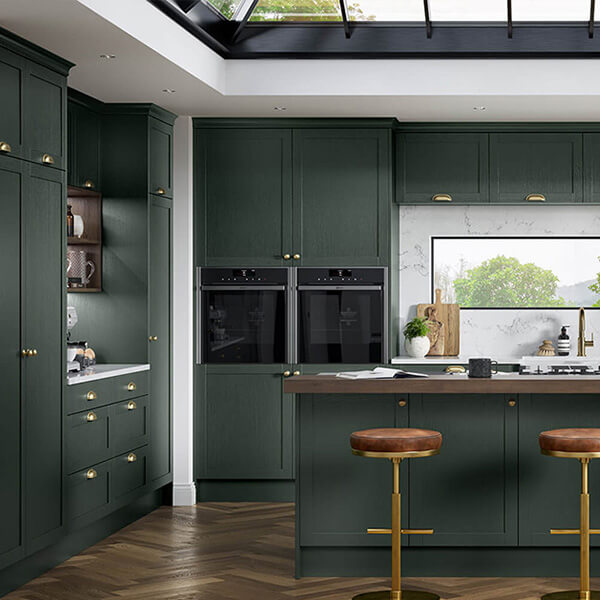Highline vs. Drawerline Kitchen Base Units: Understanding the Difference

Drawerline kitchen base units next to a Drawerline matching multi drawer unit in Indigo Blue Shaker Design from Better Kitchens
Ever wondered why some kitchens look stylish and seamless while others have a mix of storage styles? The answer often lies in the type of kitchen base units chosen.
These units play a key role in a kitchen's look and practicality. This article explores the difference between Highline and Drawerline base units.
We'll trace their history and examine their current importance. The popularity of these styles over time and how they contribute to contemporary kitchens will also be discussed.
What Are Highline Kitchen Base Units?
Overview of Highline Units
Highline kitchen base units are defined by their full door fronts, which stretch from the bottom of the cabinet to just under the worktop. This design provides a sleek and uninterrupted look, contributing to the unit's name; the "high line" of the door suggests a continuous, unbroken surface.
Design and Functionality
The full-door feature of Highline units simplifies the kitchen's appearance, offering a clean and minimalist aesthetic. The standard door size for these units is 715mm on a cabinet height of 720mm, which is a common dimension in many kitchens, allowing for ample storage space behind a single door.
Exploring Drawerline Kitchen Base Units
Detailed Explanation of Drawerline Units
Drawerline base units feature a functional combination: a drawer at the top and a door below. This design, popular in the 1960s and 1970s, was crafted to offer a blend of storage solutions, with the top drawer perfect for smaller items and the cupboard below for larger kitchen essentials.
Historical Popularity
The appeal of Drawerline units during their heyday was largely due to their practical design. When placed side by side, these units create a consistent line of drawers across the kitchen, making for an organised and accessible storage system.
Highline vs. Drawerline: Making the Choice
Comparative Analysis
Choosing between Highline and Drawerline units often comes down to personal preference and storage needs. Highline units offer a more uniform look, while Drawerline units provide a mix of storage types within the same space.
Shift in Trends
Although Drawerline units were once the go-to for practical kitchen design, the advent of kitchen pan drawers and multi-drawer units has seen a shift towards the simpler, more streamlined Highline units in contemporary kitchens.
Practical Considerations
When deciding between Highline and Drawerline units for your kitchen, consider not only the aesthetic appeal but also the functionality and the kind of storage solutions you require.
Modern Kitchen Design Trends
Beyond Highline and Drawerline
Today's kitchens blend aesthetics with functionality, incorporating modern alternatives like pan drawers and multi-drawer units that cater to specific storage needs while maintaining a cohesive design.
Integrating Technology and Design
Modern kitchen designs also consider the integration of technology, with units designed to accommodate appliances and gadgets seamlessly, further enhancing the kitchen's usability.
Customisation Options
The current trend leans towards customisation, allowing homeowners to tailor their kitchen storage with a combination of unit types to suit their unique preferences and needs.
Conclusion
The choice between Highline and Drawerline kitchen base units significantly influences the overall look and functionality of your kitchen.
While Highline units offer a minimalist and uninterrupted facade, Drawerline units provide a practical solution for organising and storing various kitchen items.
As kitchen design continues to evolve, the key is to balance aesthetics with practicality, ensuring your kitchen is as beautiful as it is functional.





